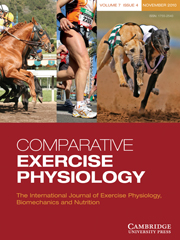Article contents
Thoroughbred yearling sales price and subsequent season end 3-year-old racetrack performance measured by Timeform ratings
Published online by Cambridge University Press: 19 October 2009
Abstract
This study investigates the relationship between Thoroughbred yearling sale price and race performance at the age of three. Sales details of all yearlings sold at Tattersalls October Yearling sales (Newmarket, UK) and Goffs Yearling sales (County Kildare, Ireland) in 2004 and 2005 were collected. End-of-year Timeform ratings were used to measure racetrack performance at the age of three. Yearlings that did not meet the study's criteria were excluded from the statistical analysis, reducing the sample size from 5749 to 1735. Comparisons between Tattersalls and Goffs were made for sale prices and end-of-year Timeform ratings. Tattersalls had a greater average sale price (56 787.51 guineas) than Goffs (52 680.49 guineas). Average end-of-year Timeform ratings were extremely similar for those yearlings sold from Tattersalls (78) and Goffs (77). A very highly significant correlation between LOG yearling sale price and end-of-year Timeform rating at the age of three (r = 0.363, n = 1735, P < 0.001) was established. Yearling sale price accounted for 13.3% of the variation in end-of-year Timeform ratings at the age of three (P < 0.01). A regression equation was formulated, allowing end-of-year Timeform rating at the age of three to be predicted from yearling sale price.
Information
- Type
- Research Paper
- Information
- Copyright
- Copyright © Cambridge University Press 2009
References
- 1
- Cited by

